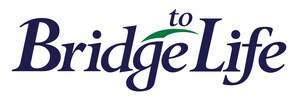Portuguese study confirms use of HOPE provides demonstrably improved liver graft utilization with reduced rates of non-anastomatic biliary stricture (NAS); Italian study demonstrates increasing experience in managing DCD (donation after circulatory determination of death) results in greater utilization of more marginal donors and transplantation in recipients at higher risk
CHICAGO, April 18, 2024 /PRNewswire/ -- Two major presentations collectively representing the largest real-world data experience with HOPE are being presented during the European Liver and Intestine Transplant Association (ELITA) Summit meeting in Madrid, Spain.
The first of the two presentations was delivered today by Dulce Diogo, MD, Unidade de Transplantação Hepática de Adultos - Serviço de Cirurgia Geral, Unidade Local de Saude de Coimbra, Coimbra, Portugal. The study, 100 Hypothermic Oxygenated Perfusion liver transplants in a Portuguese centre, was conducted by Júlio Constantino, MD et al. Dr. Constantino and colleagues concluded that hypothermic oxygenated machine perfusion of livers awaiting transplantation provides greater liver graft utilization, positive liver graft function during the immediate postoperative period, with reduced rates of non-anastomotic biliary stricture (NAS), according to the largest real-world study of this novel organ preservation technique.
In the study, conducted between August 2020 and July 2023, HOPE was used effectively in 100 liver transplants. Data were used from the donor, graft and receptor, as well as data from the intraoperative and postoperative period. Study investigators also analyzed the development of non-anastomotic biliary stricture (NAS), after excluding arterial complication patients and biliary cast syndrome. NAS is defined as one or multiple strictures in the biliary tract system not related to the anastomotic region following liver transplantation.
"In our study, HOPE allowed for more extended criteria grafts utilization, good graft function on the immediate postoperative period, and a decreased NAS rate," said Júlio Constantino, MD, lead investigator of the study. "NAS rate decreased to 6.98 percent in our centre. Previous non-anastomotic biliary strictures (NAS) incidence in our centre was 16.7 percent," he added.
Machine perfusion (MP) is a novel method for organ graft preservation before transplantation. In hypothermic oxygenated perfusion (HOPE), donor livers are continuously perfused through the portal vein and hepatic artery with a cold (4 °C), acellular, oxygenated fluid at low vascular pressures. Non-anastomotic biliary stricture (NAS) is a blockage of biliary ducts frequently occurring postoperatively in liver transplant patients.
Italian Study Demonstrates Higher Utilization of Marginal Organs and Greater Transplantation Success in Patients at Higher Risk
Also presented at 2024 ELITA Summit, Single center evolution of DCD donor utilization for liver transplantation: from perceived marginality to routine and beyond, Matteo Ravaioli, MD et al, Hepatobiliary and Transplant Surgery, Policlinico Sant'Orsola – IRCCS Azienda Ospedaliero, Universitaria di Bologna, Bologna, Italy; Department of Medical and Surgical Sciences (DIMEC), University of Bologna, Bologna (Italy), Bologna, Italy, demonstrated improved organ transplantation outcomes achieved with greater experience. In the single-centre study, Dr. Ravaioli et al showed that experience performing liver graft transplants over an extended period produced improved liver graft function and survival, as well as less surgical complications. Results were comparable over a period of several years from 2016 through 2023.
"At our centre, we were pleased to observe that the greater the number of liver grafts from DCD donors we reviewed and prepared for transplantation, the greater the potential for utilizing more marginal donors and perform transplantation in recipients at higher risk, maintaining similar outcomes," said Dr. Ravaioli, lead investigator of the Italian study. "This means we can improve the ability to use organs that would have previously been discarded and treat patients who were not considered candidates for organ transplantation because of a higher risk of surgical complications," he added.
Donation after circulatory determination of death (DCD) has raised concerns in the past due to adjunctive donor warm ischemia, which can have detrimental effects on liver graft function. In Italy, those grafts have been long considered marginal, as the legislation imposes 20 minutes of no-touch time before harvest.
Reflecting on the outcomes, Don Webber, President and CEO of Bridge to Life, expressed optimism, stating, "We find great encouragement in the consistency between our real-world findings and the interim results previously published for our multicenter, randomized study in the US. When considering these clinical results alongside the system's seamless integration into existing clinical workflows, it becomes evident that it holds significant disruptive potential in the field."
About Bridge to Life Ltd
Bridge to Life Ltd is a market leader in organ preservation solutions, offering premier products such as Belzer UW, EasiSlush and the VitaSmart1 hypothermic oxygenated perfusion system. With a strong focus on product quality, innovation and accessibility, the company serves and partners with leading Transplant Centers and Organ Procurement Offices (OPO) globally.
1 VitaSmart is CE Marked and available for sale in several markets outside of the United States. VitaSmart is not approved for sale in the US. The company successfully completed its pivotal, multicenter, randomized clinical study in the US in 2023 and expects to submit its Premarket Approval submission to FDA later this year.
SOURCE Bridge to Life Ltd.

WANT YOUR COMPANY'S NEWS FEATURED ON PRNEWSWIRE.COM?
Newsrooms &
Influencers
Digital Media
Outlets
Journalists
Opted In





Share this article